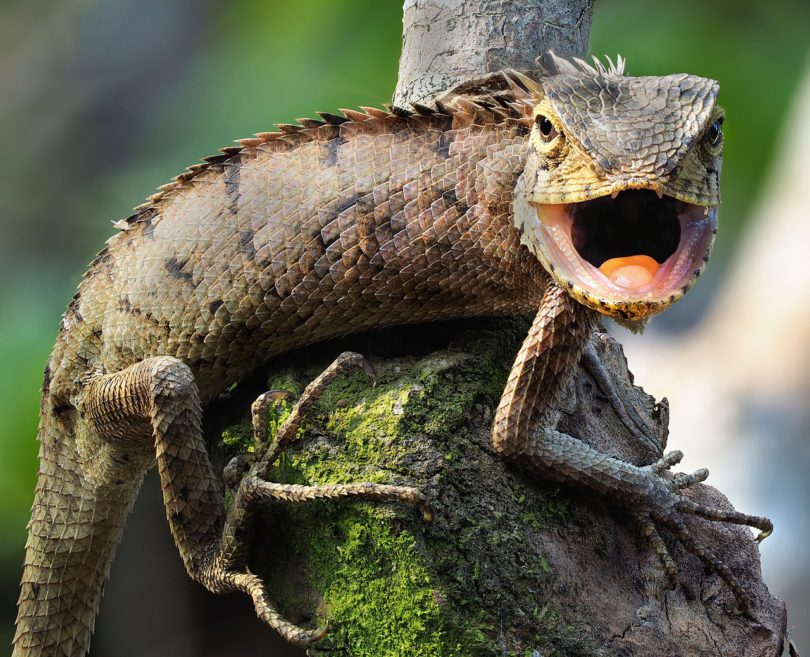People aren’t the only ones who get cranky in the heat. Salamanders, ants, minnows, and even monkeys can show a sharper edge when the temperature rises.
Back in 2016, ecologist Kristen Cecala of the University of the South in Sewanee, Tennessee, was studying black-bellied salamanders (Desmognathus amphileucus) in a warm lab tank. At their normal cool stream temperatures, the amphibians usually keep to themselves. But crank up the thermostat and suddenly the little creatures turned combative — lunging, snapping, and wrestling with rivals.
The team found that at 25° Celsius, far warmer than the salamanders’ usual habitat, the animals were nearly four times more likely to fight compared with cooler settings. Cecala jokingly calls it “salamander fight club,” though the implications are serious: hotter environments may push animals toward more aggression, with potential ripple effects on entire ecosystems.
A Widespread Pattern
This touchiness in the heat isn’t unique to salamanders. Across many branches of the animal kingdom, warmer conditions often bring out conflict.
In one 2024 experiment, freshwater biologist Erin Francispillai at McGill University placed bluntnose minnows (Pimephales notatus) in tanks where water temperatures swung from 18° to 24° C in a single day — mimicking conditions in streams stripped of shade by deforestation. The warmer the water, the more the minnows harassed each other, constantly nipping at their shoalmates.
Ants show a similar trend. In the European Alps, ecologist Patrick Krapf and his colleagues compared Tetramorium alpestre ants from different elevations. When ants from separate colonies were placed together, those accustomed to warmer conditions were far more combative — locking mandibles, grappling, and pulling limbs like miniature wrestlers.
Why the Short Tempers?
For cold-blooded animals such as salamanders, minnows, and ants, temperature directly affects physiology. Heat speeds up their metabolisms, which means more energy burned and a greater need for food. The hungrier the animal, the less tolerance it has for sharing resources or territory.
“With salamanders, they’re less willing to let other individuals, perhaps, come into [their] territories when they’re already feeling calorie-limited,” Cecala explains.
But sometimes extra energy has the opposite effect: ants may get more aggressive simply because food supplies are higher in warm conditions. With more sugary honeydew available from aphids in summer, the ants have the fuel to spare for squabbles.
Warm-blooded species aren’t immune either. While mammals can cool themselves by sweating or panting, higher temperatures still raise their metabolic demands. Research has shown that monkeys, rodents, and even dogs display more aggressive behaviors in heat. Some scientists suspect it’s partly physiological strain, while others argue it’s simply the discomfort of being too warm.
A Mirror for Human Behavior
The research also raises questions about humans. Neuroscientist Clas Linnman of Massachusetts General Hospital is investigating whether the same biological underpinnings apply to people. While crime rates often rise during heat waves, skeptics suggest that might be due to more people spending time outside. But Linnman points out that the pattern shows up across many different species, hinting at a biological component.
Environmental neuroscientist Kim Meidenbauer of Washington State University agrees that heat doesn’t just influence behavior indirectly. It can alter brain chemistry and how regions of the brain communicate, priming people for irritability and aggression. “Uncomfortable, stressful heat affects a number of psychological and physiological processes that can lead to increased aggression,” she notes.
So when tempers flare on a sweltering summer afternoon, biology may be partly to blame.
Consequences for Ecosystems
The effects aren’t just about squabbles — they may shift the structure of animal communities. Cecala worries that if salamanders keep greater distances from one another to avoid conflict, populations could thin out, leaving them more vulnerable to decline.
Krapf suggests that ants with heightened aggression might eliminate neighboring colonies, altering the balance of species across landscapes. For minnows, constant infighting may weaken the cohesion of their shoals, making them easier targets for predators.
In each case, a subtle behavioral shift — sparked by temperature — has the potential to ripple through food webs and reshape ecological dynamics.
A Hotter, Testier Future
Scientists are still asking whether these patterns will persist long-term. Will animals adapt to new thermal conditions, or will hotter climates keep pushing behaviors toward more conflict? The answers matter, because aggression isn’t just about individual scuffles — it influences survival, reproduction, and the stability of populations.
For now, one thing seems clear: rising temperatures don’t just change where animals live, they can also change how they treat one another. From Appalachian salamanders to alpine ants, the heat appears to bring out sharper tempers.
And as the planet continues to warm, those “salamander fight clubs” may be less of a laboratory oddity and more of a glimpse into the future of life in a hotter world.

